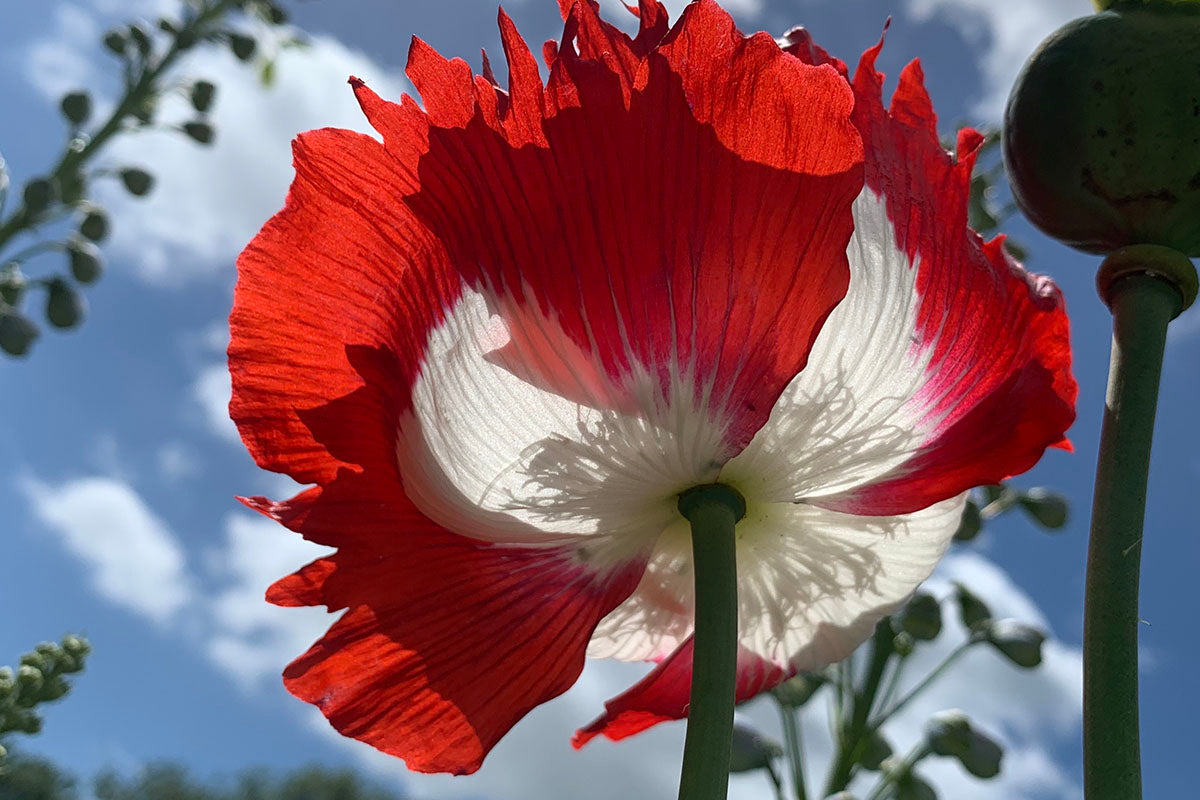Poppy love

Gardeners with smartphones will probably know that they entertain us with random photographs on the home screen every day - a picture more often than not we’ve totally forgotten taking. This week we had a beautiful poppy appear and it had us trying to remember what we’ve planted over the years, or what has been inherited from previous occupants of the cottage.
Opium poppies are always good doers on our free draining limestone soil. ‘Victoria Cross’ (pictured) is one that appears from time to time in the Genus garden, its seeds buried in the soil, lying dormant, and waiting for an opportune moment to appear. Any of these ‘somniferum’ types are profuse seeders coming in a range of colours that include black, white, purple, red, and pink. Even their glaucous seedheads remain attractive long after the flowers have faded.
We also have Oriental poppies which are bomb proof and reliable perennials with hairy stems and buds, the flowers rising up to knee height but nearly always requiring support. Cut to the ground after flowering they’ll often give a second, later flush of colour. Welsh poppies, (Meconopsis cambrica), usually yellow but sometimes orange, come in single or double flowered forms and are one of our favourites when it comes to the self seeders. Happy at the front of the border or on the edge of gravel paths they require absolutely no input from us except maybe a thinning out of the volunteer seedlings if they become a little over enthusiastic in their propagation.
Califonian poppies (Eschscholzia californica) with their feathery foliage and acid orange flowers are another annual poppy that we let seed in the paths and borders. If the colour is just too much for your scheme they also come in creams, yellows, pinks, reds, and whites. The poppies we’d love to grow are the blue Meconopsis. Originating in the Himalayas we’re never going to succeed with them - they prefer acid soils, something we can’t give them on our limey Cotswold brash. If you have a neutral to acid soil, have a look at the varieties available. Be warned. It will be love at first sight.











